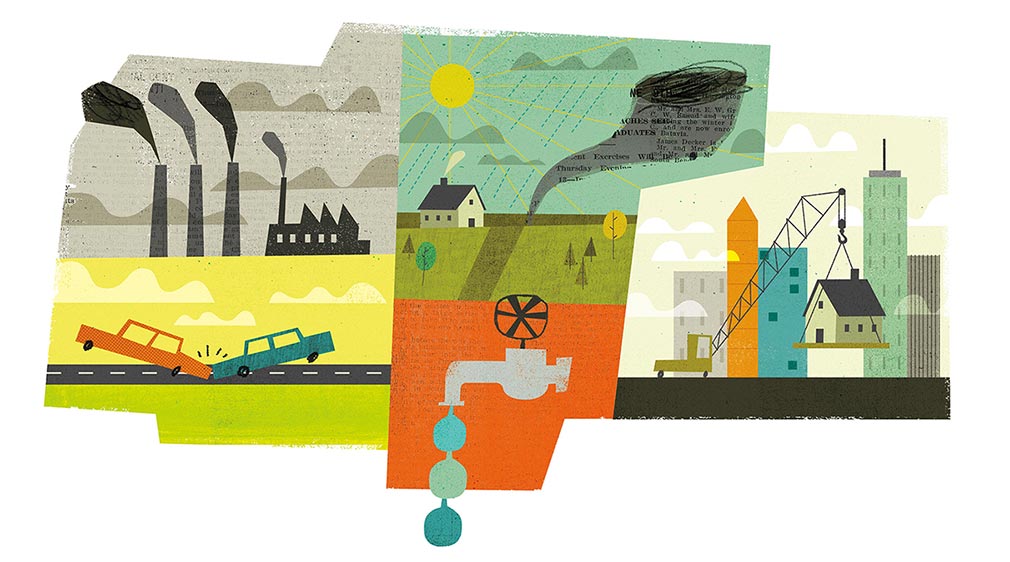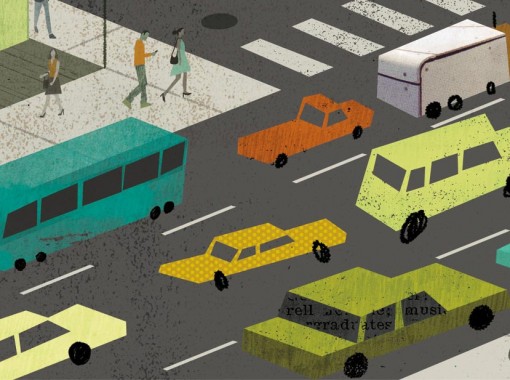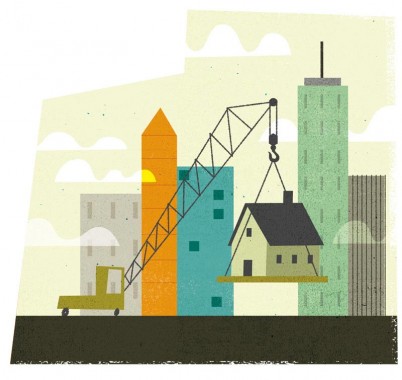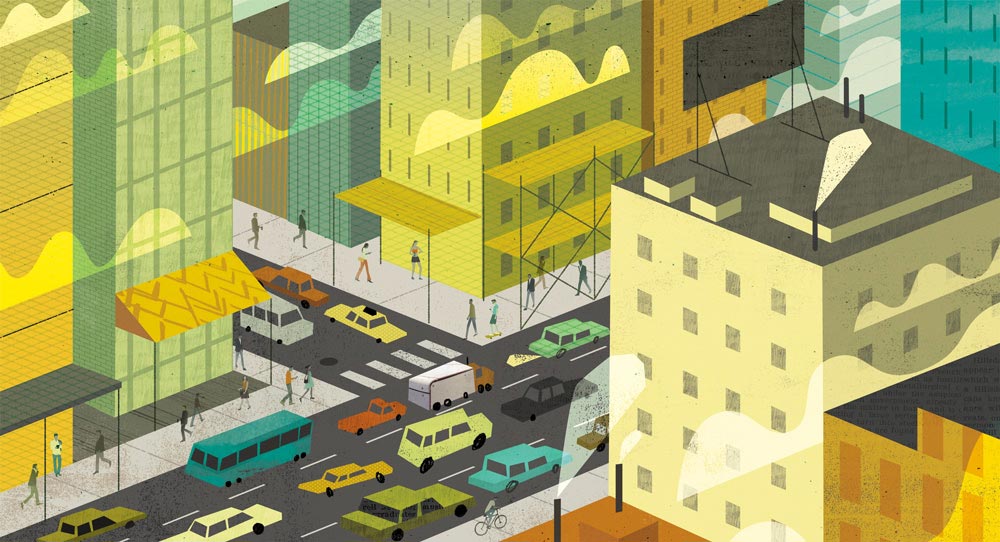Which is more hazardous
Cities are fundamentally at odds with environmental quality and safety, right? Not so fast.
In the fall of 2004, I was assigned to teach a course on urban environmental issues in the coming semester. Although I’ve done extensive research into the human dimensions of environmental issues, I had never thought particularly about the role of cities.
In preparing the course, I supposed (and soon discovered) that the students would arrive expecting that cities and environmental quality are fundamentally at odds, and that the rationale for the course would lie squarely in the greater magnitude and severity of damage that cities can do. So, I thought that providing a few counterexamples might provide some interest.
I was surprised at how many I was able to find. That inspired me to look further. I began assessing what many people have written on the subject in the popular as well as the scientific literature, and found myself identifying mistakes they made in thinking about it. In fact, many widely held beliefs that sound not just plausible, but downright convincing, fail to stand up to close logical or empirical scrutiny.
The mistakes display many of the same recurrent underlying errors. I found that even some of the most respected authorities have stepped into certain pitfalls, which are well camouflaged and highly seductive. I came to call the negative profile formed by the beliefs those errors promote commonsense environmental antiurbanism.
I decided to write about cities and the environment through object lessons in how not to think about their relationship, citing not only those who erred, but also those who got it right. Several of my students, notably Shannon Sweeney ’07 and the members of my spring 2012 class in urban geography, helped me along the way. The result is my latest book, The Environmental Advantages of Cities: Countering Commonsense Antiurbanism.
The city, defined
What do I consider a city, anyway? In the absence of an established core discipline of urban studies, there is no standard terminology for the subject. I stay as close as possible to everyday usage: the terms city and urban denoting a place both with a high density and a large number of people.
Both elements are necessary. Consider the 1973 study of the !Kung Bushmen (hunter-gatherers of Botswana and Namibia), which found that they live at densities equivalent to about 30 persons per room. Yet, we wouldn’t call them urbanites, because they live in groups of only 30 to 40.
There is no cutoff point in size or density between urban and rural. We can only say that one place is more urban than another. Suburban sprawl, sometimes sloppily described as urbanization, is better termed de-urbanization; it shifts population from more to less urban settings.
And the terms imply other criteria as well. Cities, or highly urban places, function under some formal or informal institutions of government, with land cover occupied by structures and artifacts of human shaping, and the chief livelihood being something other than agriculture.
So, let’s consider some examples of commonsense environmental antiurbanism.
Urbanization and poverty go together. True or false?
It depends on what you mean by “urbanization.” The poorest countries in the world are indeed the ones that have the highest rates of urban growth. The richest countries in the world, though, are the ones with the highest levels of urbanization.
Burundi and Papua New Guinea, the two least-urbanized countries, are two of the very poorest. And rapid urbanization in the poor countries also coincides with rapid economic development.
It would be more accurate to say that high levels of urbanization and wealth go together. Cities house many poor people, yes. But urban poverty is much more visible than rural poverty, not necessarily more prevalent, and usually less so. Where it is more prevalent, it is not so much because cities make people poor as because poor people move to cities. Cities are relatively good places to be poor in, and abundant in opportunities for becoming less poor.

Ecological disruption
Suburban areas are far greener than cities. True or false?
Literally, true. Suburbs, of course, have more green cover like lawns and trees. Metaphorically, false. Green cover usually replaces the natural ecosystem and sustains an imported one by drawing upon heavy inputs of chemicals, water, and energy. The geographers Paul Robbins and Julie Sharp found that the same homeowners who described themselves as environmentalists were the ones likeliest to manage their yards intensively, adding higher-than-average inputs of lawn-maintenance chemicals. Taking care of a lawn may indeed represent a highly valued interaction with “nature” in the eyes of many suburbanites, who seem less aware that it is a kind of interaction involving the aggressive transformation of the predevelopment land cover.
And, high-density urban settlement reduces the area over which intensive development alters the ecosystem, whereas low-density occupation deforests, fragments, or otherwise disrupts much-larger areas per household. A study of the urban heat island in Atlanta illustrates this: parcels developed for low-density suburban residence contributed proportionally more heat to the urban warming than did ones developed for higher densities.
A confusion between what is literally and metaphorically green may do much to hide the real environmental advantages of cities.
If you believe that population growth is a major cause of environmental degradation, you should be especially worried about the growth of cities. True or false?
False. It is true that population growth contributes significantly to the growth of cities. But not vice versa. Indeed, one of the best-proven generalizations in the social sciences is that urbanization reduces population growth. And it’s not because urban mortality is greater than rural — the opposite is usually true. Rather, urbanization lowers the number of children that families choose to have, for reasons including the higher cost per child and women’s greater access to education, employment, and contraception.
Trying to slow or reverse urbanization would hinder the process of reversing environmental degradation.
Resource consumption
If you wanted to reduce your consumption of natural resources, where would you move in the United States today: a city, a suburb, or a rural area?
Shannon Sweeney ’07 asked this question in a mail survey as part of her senior honors thesis at Colgate. The largest percentage of respondents said “a rural area,” and the smallest, “a city” — which is actually the correct answer.
The smaller living and yard spaces, less dependence on automobiles, and more efficient use of infrastructure (roads, utility connections) among urban dwellers mean a lower per capita consumption of key resources from land and water to energy and materials. The misconception involves thinking about where the greatest total resource consumption occurs, rather than measuring levels of demand by population.
Cities have much larger “ecological footprints” than rural areas. True or false?
In absolute terms, true, but an absolute measure is seriously misleading. The population of an American city, logically enough, consumes a greater aggregate of resources than that of a less-populous rural unit. But again, per capita consumption is what really matters. The per capita footprint of a city dweller, all else equal, is smaller. To put it another way: a given number of people living at their country’s characteristic standard of living would consume a smaller quantity of resources if they lived in an urban (high-density) pattern than if they lived in a rural or suburban (dispersed, low-density) one.

Pollution
The world’s worst air pollution exposure levels are found in third-world cities. True or false?
False, surprisingly. Third-world cities indeed have appalling levels of air pollution. But it is never enough to point to environmental problems that occur in cities, without comparing them to conditions in rural areas. Third-world rural areas are even worse off in air quality, because the most important component of total exposure is indoor pollution. Rural households rely disproportionately on smoky biomass fuels for cooking and heating. For example, a study revealed that in southern China, total urban exposure to airborne particulate matter was only 65 percent of what it is in rural ones. But exposure in rural and indoor settings is far less visible to observers than in the urban outdoors — another frequent source of misconceptions about cities and the environment — and so the image of the clean countryside and the polluted city persists.
Where in the United States is it safer to drink the water: rural areas or cities?
Taken straight from the source, naturally, it is likely to be safer in rural areas. But that’s not how we get our drinking water. Rural residents rely much more heavily than urbanites do on wells and on small municipal systems. Neither have the safeguards against harmful contaminants that large city systems, with protected sources and purification facilities, can offer.
Natural hazards
Rural areas in the United States are safer from tornadoes than urban ones. True or false?
False. One’s first thoughts might focus on the greater thickness of flying debris in a city. But tornado death rates in the most urban counties of the American heartland are lower than statewide averages, and those in the most rural counties are higher. Urban settings offer such advantages as easier access to safe shelters, more timely dissemination of warnings, quicker post-disaster aid, and better construction encouraged by stricter building codes.
Rural areas are safer from earthquakes than urban ones. True or false?
Again, one’s first image might be one of urban danger, of falling debris and collapsing buildings in a crowded city. But the one study to make a controlled comparison found that death rates from earthquakes increase as population density declines. The reasons that help explain the difference in tornado safety also apply here. They apply equally well to hurricanes, the other acute weather hazard of the developing world.
Technological hazards
Where are traffic accidents (the world’s leading cause of accidental death) more deadly: in cities or in rural areas?
Surely, where the streets are most congested? In fact, it’s just the opposite. Traffic accidents are least deadly in cities, where speeds are most restricted, roads are better designed, and emergency aid is closest at hand. In the developed world, suburban rates fall between urban and rural ones.
The most dangerous occupations are typically urban ones. True or false?
False. We tend to think of industrial accidents when we think of workplace hazards. But industry is not the most hazardous kind of work (nor, for that matter, is it any longer predominantly urban). Farming, the classic rural livelihood, is also particularly dangerous; likewise lumbering, mining, and trucking. Not only are injuries more frequent, but, as with traffic accidents, help is farther away when they occur in rural settings.
Infectious disease
Malaria, the world’s worst vector-carried infectious disease, affects city dwellers more than rural residents. True or false?
False. It might seem that infectious disease of any kind must be more common where people live most closely together. But clustering has other effects that, on the whole, more than offset this urban penalty. For one, the land cover of cities is far-less hospitable to the mosquitoes that transmit malaria than that of urban-fringe and, especially, rural areas. In fact, urbanization in sub-Saharan Africa is one of the most hopeful trends in the continent’s struggle with the disease.
Drug-resistant tuberculosis is most prevalent in cities. True or false?
True. Not all urban penalties are myths! But even this one grows out of an underlying urban advantage. Concentration of population facilitates the provision of medical care, including anti-TB drug treatment. This, in turn, facilitates the process by which strains resistant to the drugs arise and flourish.

Human habitat
Forced urbanization by national governments has been an important cause of city growth. True or false?
False. In fact, government policy around the world has aimed much more often to prevent people who want to move to cities from doing so than to force the unwilling to urbanize. A 2006 United Nations study found that 115 national governments had policies meant to discourage urbanization, versus only six that sought to promote it. Governments tend to fear and distrust the cities that most of their people would prefer to live in, because urban unrest is more effective than rural.
“A people, when assembled in a town,” as the English historian Thomas Babington Macaulay wrote in 1827, “is far more formidable to its rulers than when dispersed over a wide extent of country.” Most rulers have known this and acted accordingly.
High-density living is unhealthy for animal species, human beings included. True or false?
A famous article published in 1962 by John B. Calhoun described a shocking deterioration in the behavior of rats when their populations increased exponentially in confined spaces. Many took his findings to mean that human behavior in cities will do the same as densities increase. But rats do not represent all animals. Others — ants, honeybees, schooling fish, prairie dogs, for example — are social creatures that can only survive and thrive in high densities. Human beings do not have the same biological territoriality as Calhoun’s rats, and their most important qualities depend on society and interaction for their full development.
Sprawl, considered
Wouldn’t Americans be better off if they were spread out evenly across the surface of the United States, minimizing crowding and all of its inconveniences?
No. Frank Lloyd Wright proposed something like this in his ultra-dispersed vision of the United States as “Broadacre City.” He was a genius of architecture — but not of social or natural science. Such a dispersed population pattern would not only be an environmental disaster in many ways, but also an economic one.
Likewise, President Lyndon Johnson asked in the 1960s, “Does it really make sense to have more than seventy percent of our people crammed into one percent of our land?” He was a genius of politics — but not of urban geography. When the advantages of clustering and proximity are taken into account, it does make sense.
Doesn’t the outwardly sprawling growth of the modern American city prove that human beings, deep down, dislike living in dense urban settings — because those who have the widest freedom to choose opt for something different?
Not necessarily. For one thing, Anglo-American societies have traditionally been anti-urban, while others have been the opposite. This is a matter of culture, not of human nature. For another, even in the United States, the bias against cities has never been universal, and has weakened recently with large numbers of affluent residents returning to urban cores. Finally, only on a level playing field could we accurately compare. Tax, energy, environmental, transportation, food, and housing policies in the United States have directly and indirectly subsidized suburban and rural areas at the expense of urban ones. Those who have opted for low-density settlement have not had to pay the full costs of their choices.
A final question
The role of the academic is to clarify these things. I’m not a city planner, nor a government official. My hope in debunking these misconceptions is to confront them in order to help prevent us from repeating errors frequently made in the past.
The policies of most countries in the world are antiurban. Most limit urbanization and try to discourage people from moving to cities. At the very least, those policies should be questioned and rethought.
And at the individual level (although much less so than in the past), many environmentalists today are still instinctively antiurban. Their ideal of life is not the city. People move to the country because they love nature, but that has aptly been called loving nature to death.
The question is, if you value and want to preserve the earth, where would you live to make the least impact?
“Some people may be startled to find that a book clearly in praise of cities would be written by someone based in such a rural setting as Colgate’s,” said geography professor William Meyer of The Environmental Advantages of Cities (MIT Press). But, in fact, he’s found Colgate an ideal place in which to do his research and teach courses such as Global Shift: Economics, Society, & Geography; Earth, Society, and Sustainability; Urban Geography; The American City; and Water and Society. His book has received favorable reviews in journals such as Growth and Change and Regulation.
You can listen to him discuss his notion of commonsense environmental antiurbanism in “Want to Save the Environment? Build More Cities,” a Techwise Conversations podcast for Spectrum, the magazine of the Institute of Electrical and Electronics Engineers. A former research associate at the Belfer Center in Harvard’s Kennedy School of Government and Clark University, Meyer also wrote Americans and Their Weather: A History and Human Impact on the Earth.
This article is the second in our series featuring scholarship by Colgate professors that — in creative and sometimes counterintuitive ways — explores ways that humans are impinging upon the Earth.




“… poorest countries in the world are indeed the ones that have the highest rates of urban growth …” Actually, that is an artifact mostly. Cities in some underdeveloped countries grow to some extent only because we developed nations dump our agricultural surpluses onto these nations so that rural farmers, living on a dollar a day, cannot even compete. This drives them into the cities, because it is there where the “charitable NGOs” feed them … more of the same subsidized stuff.
Yet another thing we need to take into account: where people spend most of their time. Living in a city or a rural backwater cannot, environmentally, be compared by e.g. using probes somewhere in the “middle” to measure e.g. air quality. Esp. with particulate matter we have often twenty (!) times the concentration indoors than outdoors. Meaning that if a city dweller, having a white collar job, first sits at home, then at the office, then back home again the whole day, he/she may inhale about thirty times the amount of particulate matter than a rural farmer who, though having the same carpet in his home, works outside for fourteen hours a day.
Which is why “measuring the environment” is a deceptive concept at times.